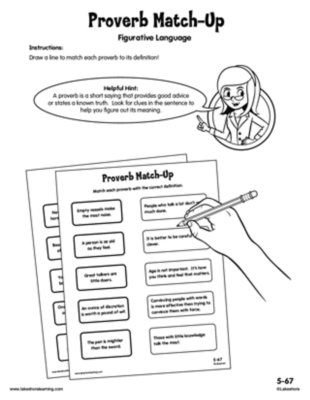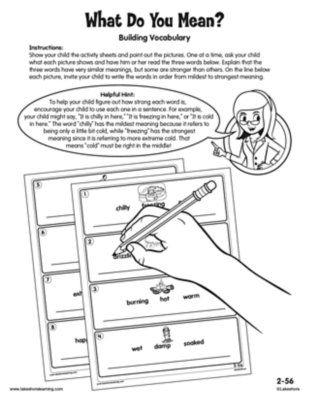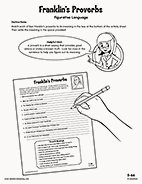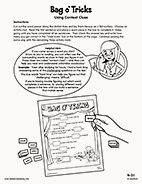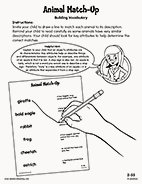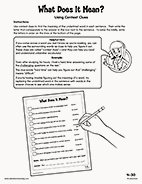Narrow by Grade
Grade
0 results for "borders" , here are results for "birds"
During fifth grade, your child will learn to interpret examples of figurative language, including similes and metaphors, based on the context in which they are used. Your child will also learn to recognize and explain the meaning of common idioms and familiar sayings and expressions, such as, “A bird in the hand is worth two in the bush.”
View worksheetWhen entering second grade, your child should be able to define words by category and key attributes. For example, “A duck is a bird that swims.”
View worksheetDuring fifth grade, your child will learn to interpret examples of figurative language, including similes and metaphors, based on the context in which they are used. Your child will also learn to recognize and explain the meaning of common idioms and familiar sayings and expressions, such as, “A bird in the hand is worth two in the bush.”
View worksheetWhen entering fourth grade, your child should be able to use clues within a sentence to figure out the meaning of an unfamiliar word or phrase. For example, in the following sentence, the underlined portion provides a clue to what the word “aviary” means: The zoo’s aviary was filled with owls, bluebirds, parrots, parakeets and cuckoos.
View worksheetWhen entering second grade, your child should be able to define words by category and key attributes. For example, “A duck is a bird that swims.”
View worksheetWhen entering fourth grade, your child should be able to use clues within a sentence to figure out the meaning of an unfamiliar word or phrase. For example, in the following sentence, the underlined portion provides a clue to what the word “aviary” means: The zoo’s aviary was filled with owls, bluebirds, parrots, parakeets and cuckoos.
View worksheet